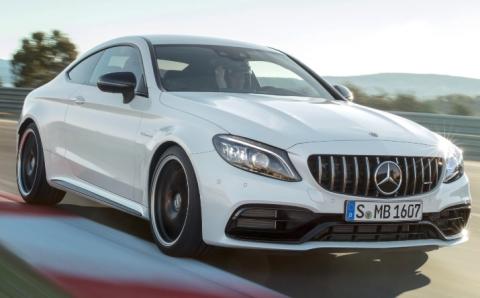Adults have gotten the message that it’s safer for kids to ride in the back seat properly restrained, but when it comes to their own safety, there is a common misperception that buckling up is optional. Among adults who admit to not always using safety belts in the back seat, 4 out of 5 surveyed by the Insurance Institute for Highway Safety say short trips or traveling by taxi or ride-hailing service are times they don’t bother to use the belt.
The new survey reveals that many rear-seat passengers don’t think belts are necessary because they perceive the back seat to be safer than the front. This shows a clear misunderstanding about why belts are important, no matter where a person sits in a vehicle.
Before the majority of Americans got into the habit of buckling up, the back seat was the safest place to sit, and the center rear seat was the safest place of all in 1960s-70s vehicles. In recent decades, high levels of restraint use and the advent of belt crash tensioners, airbags and crashworthy vehicle designs have narrowed the safety advantages of riding in the rear seat for teens and adults.
“For most adults, it’s still as safe to ride in the back seat as the front seat, but not if you aren’t buckled up,” says Jessica Jermakian, an IIHS senior research engineer and a co-author of the study. “That applies to riding in an Uber, Lyft or other hired vehicle, too.”
While driver and front passenger belt use has been extensively studied, there is not a lot of research on why rear-seat passengers don’t buckle up. Prior IIHS surveys of belt use among adults focused on their belt-use habits in general, but not specifically belt use in the rear seat. The latest study fills this gap.
IIHS surveyed adults 18 and older by cellphone and landline between June and August 2016. Of the 1,172 respondents who said they had ridden in the back seat of a vehicle during the preceding six months, 72 percent said they always use their belt in the back seat, while 91 percent said they always use their belt when seated in front. This is in line with the 2015 nationwide observed belt use of 75 percent for adult rear-seat occupants and 89 percent for drivers and front-seat passengers.
Although safety belts are proven to save lives, more than half of the people who die in passenger vehicle crashes in the U.S. each year are unbelted. One person’s decision not to buckle up can have consequences for other people riding with them.
“People who don’t use safety belts might think their neglect won’t hurt anyone else. That’s not the case,” Jermakian says. “In the rear seat a lap/shoulder belt is the primary means of protection in a frontal crash. Without it, bodies can hit hard surfaces or other people at full speed, leading to serious injuries,” she says.
Prime-age adults (35 to 54 year-olds) were the least likely group to report always buckling up in the back seat. Sixty-six percent of this group reported always using a belt in back, compared with 76 percent of adults 55 and older and 73 percent of adults 18 to 34.
Women were more likely than men to report always using a belt in the rear seat, and adults who had attended college were more likely to buckle up than adults with less education. These findings are in line with prior surveys of belt use.
When asked why they don’t buckle up, a quarter of respondents in the group who reported buckling up less often in the back seat than in the front said they believe the rear seat is safer than the front, so using a belt isn’t necessary. The next most popular reason this group gave was that using a belt isn’t a habit or they forget about it or simply never or rarely use it. Twelve percent of respondents cited uncomfortable or poorly fitting belts as a reason for not buckling up, and 10 percent said the belt is difficult to use or they can’t find the belt or buckle.
People who reported that most of their trips as a rear-seat passenger were in hired vehicles were more likely to report not always using their safety belt than passengers in personal vehicles. In the survey, 57 percent of passengers in hired vehicles reported always using their belt in the rear seat, compared with 74 percent of passengers in personal vehicles.
“If your cab or ride-hailing driver is involved in a crash, you want that safety belt,” Jermakian says. “Even if state law says belts are optional, go ahead and buckle up anyway. If you can’t find the belt or it’s inaccessible, ask your driver for help.”
Get More Great Car Videos - Subscribe: https://goo.gl/BSIaFc
The new survey reveals that many rear-seat passengers don’t think belts are necessary because they perceive the back seat to be safer than the front. This shows a clear misunderstanding about why belts are important, no matter where a person sits in a vehicle.
Before the majority of Americans got into the habit of buckling up, the back seat was the safest place to sit, and the center rear seat was the safest place of all in 1960s-70s vehicles. In recent decades, high levels of restraint use and the advent of belt crash tensioners, airbags and crashworthy vehicle designs have narrowed the safety advantages of riding in the rear seat for teens and adults.
“For most adults, it’s still as safe to ride in the back seat as the front seat, but not if you aren’t buckled up,” says Jessica Jermakian, an IIHS senior research engineer and a co-author of the study. “That applies to riding in an Uber, Lyft or other hired vehicle, too.”
While driver and front passenger belt use has been extensively studied, there is not a lot of research on why rear-seat passengers don’t buckle up. Prior IIHS surveys of belt use among adults focused on their belt-use habits in general, but not specifically belt use in the rear seat. The latest study fills this gap.
IIHS surveyed adults 18 and older by cellphone and landline between June and August 2016. Of the 1,172 respondents who said they had ridden in the back seat of a vehicle during the preceding six months, 72 percent said they always use their belt in the back seat, while 91 percent said they always use their belt when seated in front. This is in line with the 2015 nationwide observed belt use of 75 percent for adult rear-seat occupants and 89 percent for drivers and front-seat passengers.
Although safety belts are proven to save lives, more than half of the people who die in passenger vehicle crashes in the U.S. each year are unbelted. One person’s decision not to buckle up can have consequences for other people riding with them.
“People who don’t use safety belts might think their neglect won’t hurt anyone else. That’s not the case,” Jermakian says. “In the rear seat a lap/shoulder belt is the primary means of protection in a frontal crash. Without it, bodies can hit hard surfaces or other people at full speed, leading to serious injuries,” she says.
Prime-age adults (35 to 54 year-olds) were the least likely group to report always buckling up in the back seat. Sixty-six percent of this group reported always using a belt in back, compared with 76 percent of adults 55 and older and 73 percent of adults 18 to 34.
Women were more likely than men to report always using a belt in the rear seat, and adults who had attended college were more likely to buckle up than adults with less education. These findings are in line with prior surveys of belt use.
When asked why they don’t buckle up, a quarter of respondents in the group who reported buckling up less often in the back seat than in the front said they believe the rear seat is safer than the front, so using a belt isn’t necessary. The next most popular reason this group gave was that using a belt isn’t a habit or they forget about it or simply never or rarely use it. Twelve percent of respondents cited uncomfortable or poorly fitting belts as a reason for not buckling up, and 10 percent said the belt is difficult to use or they can’t find the belt or buckle.
People who reported that most of their trips as a rear-seat passenger were in hired vehicles were more likely to report not always using their safety belt than passengers in personal vehicles. In the survey, 57 percent of passengers in hired vehicles reported always using their belt in the rear seat, compared with 74 percent of passengers in personal vehicles.
“If your cab or ride-hailing driver is involved in a crash, you want that safety belt,” Jermakian says. “Even if state law says belts are optional, go ahead and buckle up anyway. If you can’t find the belt or it’s inaccessible, ask your driver for help.”
Get More Great Car Videos - Subscribe: https://goo.gl/BSIaFc
- Category
- Autogefühl








Comments